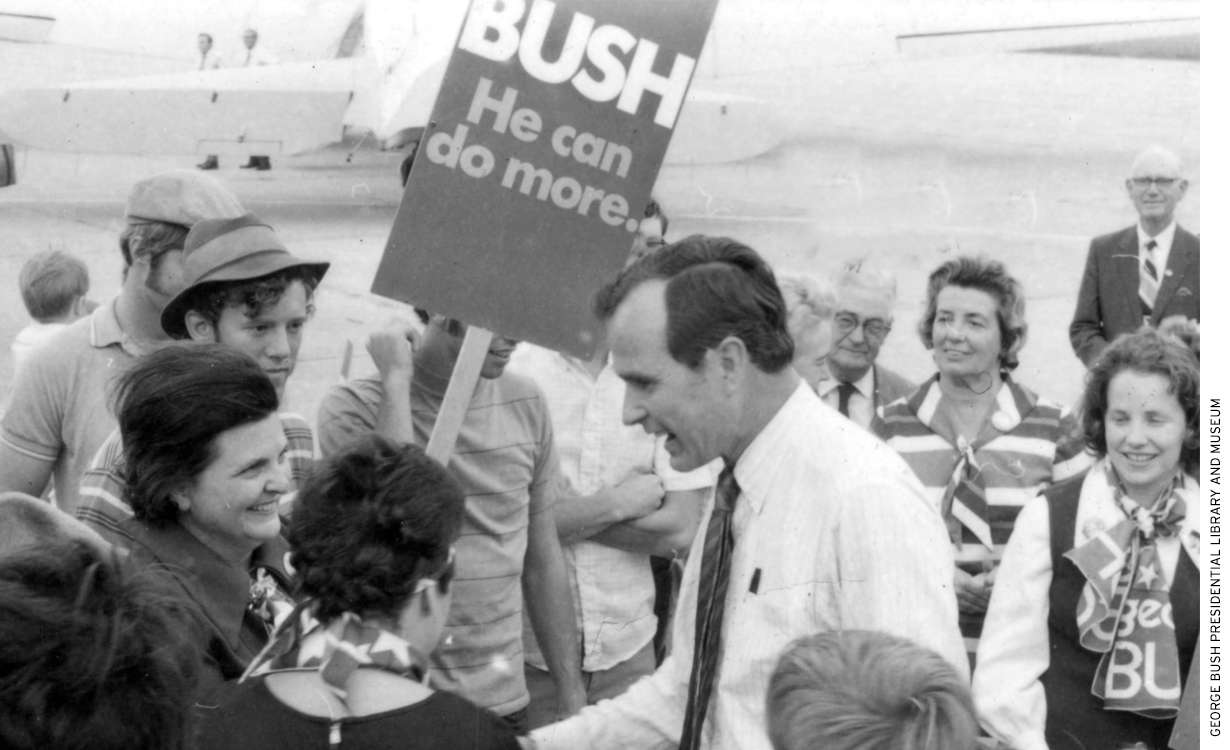
During his 1988 campaign, George H. W. Bush said, “I want to be the education president.” Was he?
No, says the K–12 Teachers Alliance. It ranks “education presidents” based on their use of federal mandates to direct school success—as Bill Clinton did with Goals 2000, George W. Bush did with No Child Left Behind, and Barack Obama did with Race to the Top and conditional waivers to federal law.
Yes, I say. I still believe what I wrote in 1993 after serving 22 months as Bush’s education secretary: “When the dust settles and the history books are written, President George H. W. Bush’s leadership in education will be recognized as among his most significant and lasting contributions.” (See “What We Were Doing When We Were Interrupted.”)
Instead of relying on federal mandates, Bush in 1989 convened a national summit of governors to establish six national education goals focusing on improved graduation and literacy rates; student achievement; school readiness; and the elimination of drugs and violence in schools. Then, in April 1991, he launched the bipartisan America 2000 strategy in every state to mobilize the country, community by community, toward meeting those goals.
In addition to America 2000, the president’s agenda included a series of truly radical initiatives: 1) a new set of voluntary national standards in core-curriculum subjects, including science, history, English, geography, arts, civics, and foreign languages (math already was done); 2) a voluntary national examination system geared to those new standards; 3) a new generation of thousands of start-from-scratch, break-the-mold, and public charter schools; 4) more autonomy and flexibility for teachers in their classrooms through the waiver of federal rules and regulations; and 5) a $500 million GI Bill for Children to give middle- and low-income families $1,000 scholarships to spend at any lawfully operated school of their choice (which Congress did not approve). With the nation’s governors, he created the bipartisan National Education Goals Panel of governors, members of Congress, and administration officials to monitor progress toward the goals. The private, nonprofit New American Schools Development Corporation raised $50 million to fund design teams to help communities create break-the-mold schools.
Enactment of the Every Student Succeeds Act (ESSA) in 2015 confirms that most governors, teachers, superintendents, parents, school board members, and members of Congress today agree with H. W. Bush’s formula for federal education policy. As Newsweek said in July of that year, No Child Left Behind—the principal vehicle for more federal control of schools—was “the education law everyone wants to fix.” ESSA reversed the trend toward a “national school board” and made clear that the future path to higher standards, better teaching, and real accountability will be through states, communities, and classrooms and not through Washington, D.C. In November 2015 the Wall Street Journal called ESSA “the largest devolution of federal control to the states in a quarter century.” In short, almost everyone involved in educating America’s children had grown tired of Washington telling them how to do it.
ESSA basically put federal education policy back where it was in 1992 when Bush told the Democrat-controlled Congress that he would veto its reauthorization of the Elementary and Secondary Education Act because it smacked too much of a “national school board”—but ESSA leaves in place and encourages the considerable strides states have made since 1989: creating higher standards, better tests, new accountability systems, and ways to help low-performing schools. The 10 start-from-scratch public charter schools that Minnesota created in 1992 have grown to 7,000 nationwide. States and school districts have made significant progress in new teacher-evaluation systems and school choice. Bush helped start or encouraged most of the effective actions states are taking today to strengthen their schools.
To be sure, federal mandates sometimes have contributed to better schools. They also have created a massive backlash that threatened to undermine the steady state-by-state progress toward national goals. See, for example, Common Core, teacher evaluation, and high-stakes testing. It is tempting and simpler to use federal mandates to try to improve student achievement in 100,000 public schools, but Americans are fed up with Washington mandates. Without local buy-in, there is little lasting benefit. A harder but better strategy is for the federal government to set the agenda and create an environment for success—but avoid mandates. George H. W. Bush understood that. That is why I believe he was a consequential education president.
Lamar Alexander is Tennessee’s senior United States senator.
This article appeared in the Spring 2019 issue of Education Next. Suggested citation format:
Alexander, L. (2019). Remembering an Education President: George H.W. Bush led by enabling, not mandating, state and local reform. Education Next, 19(2), 84.


